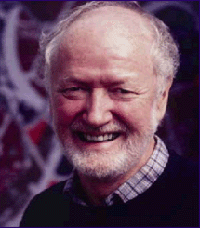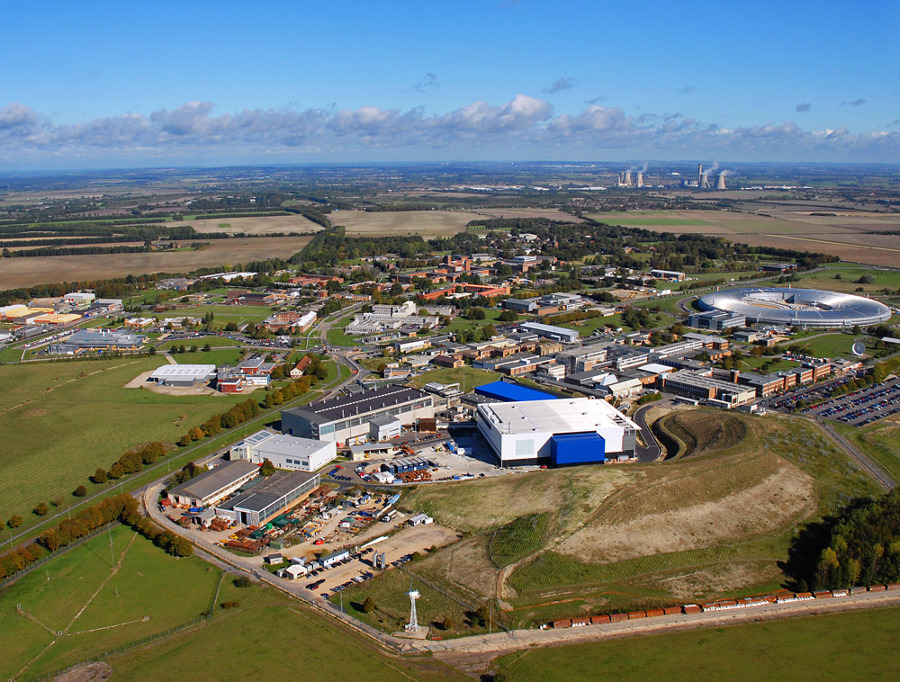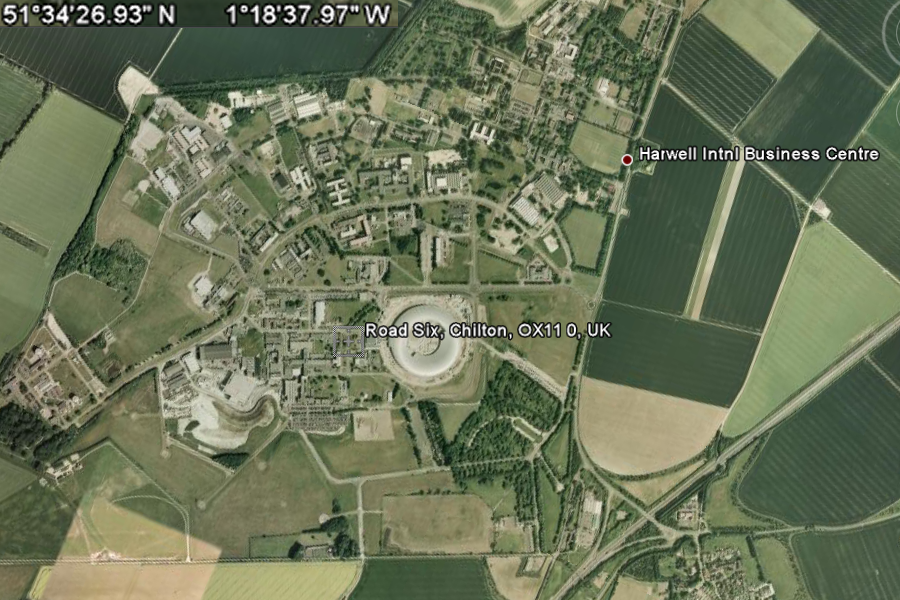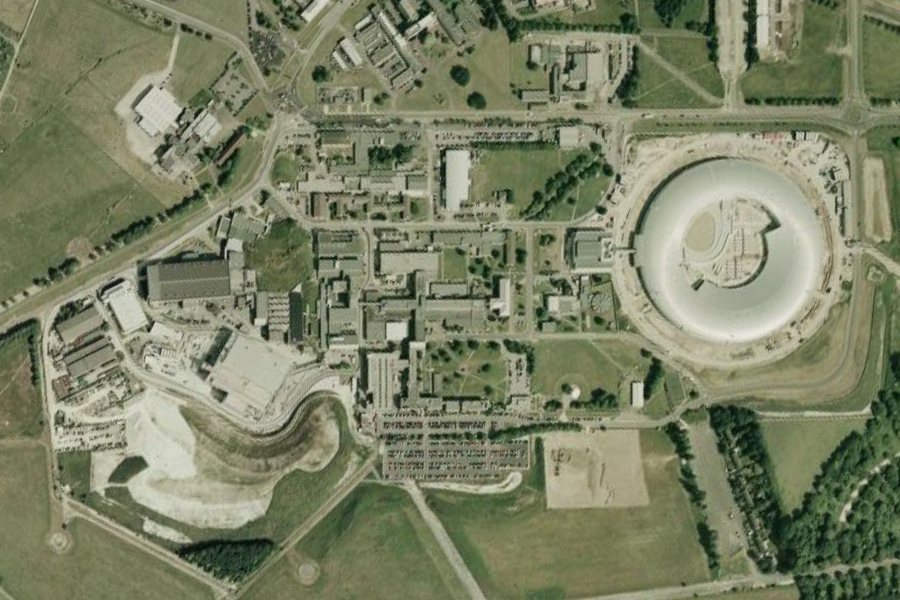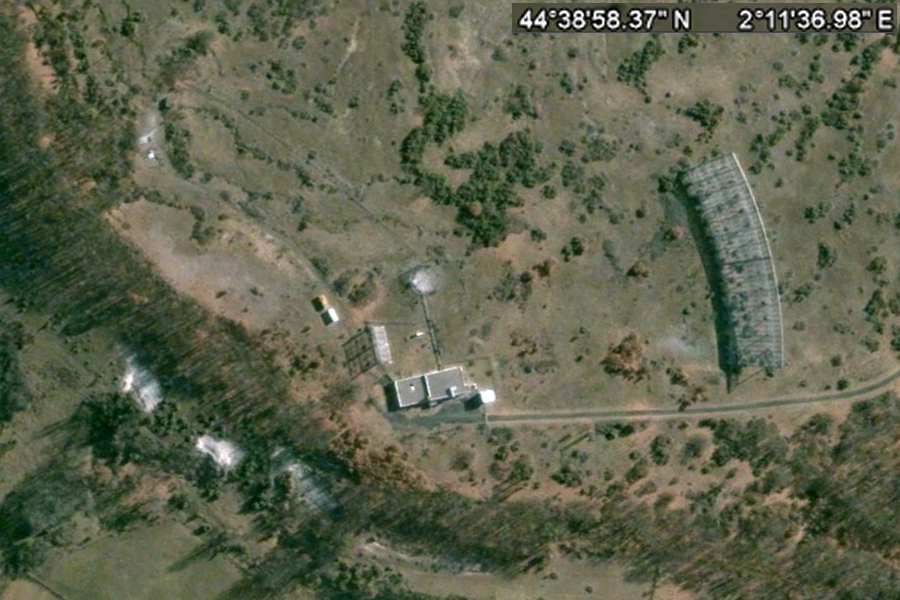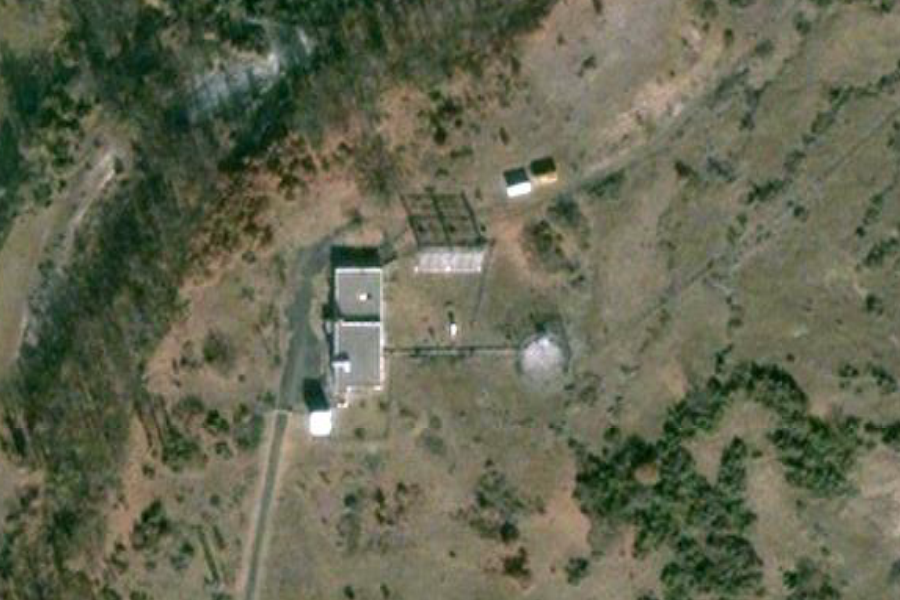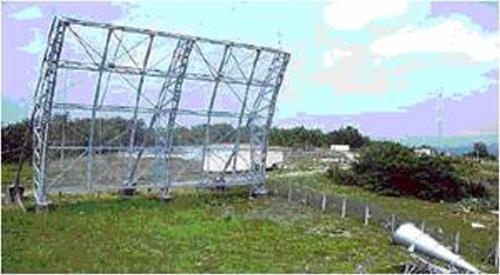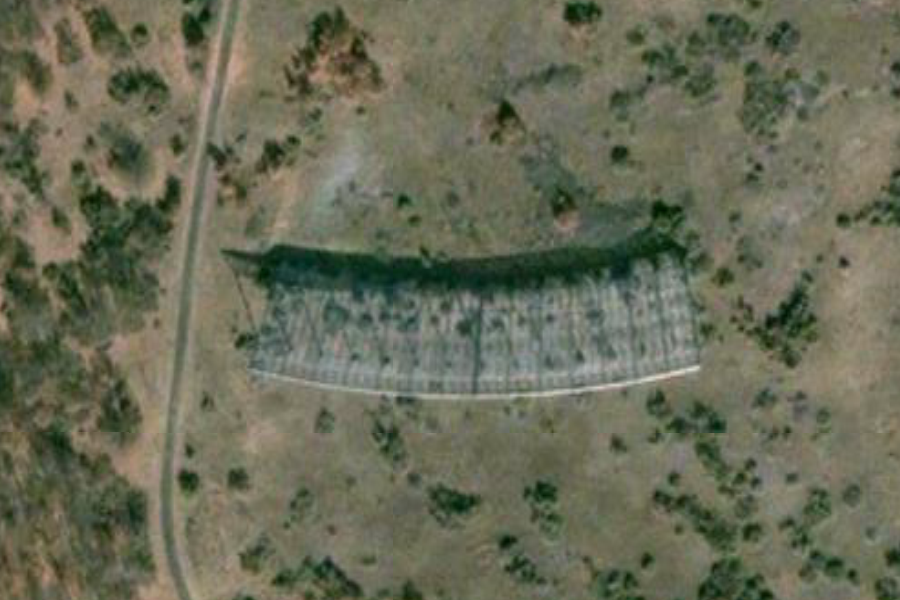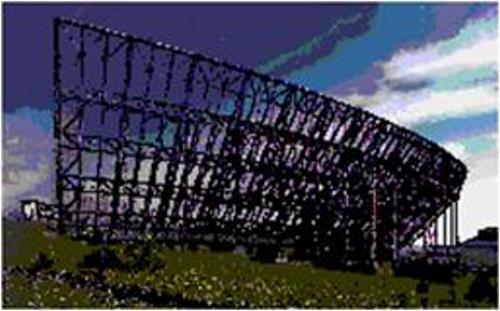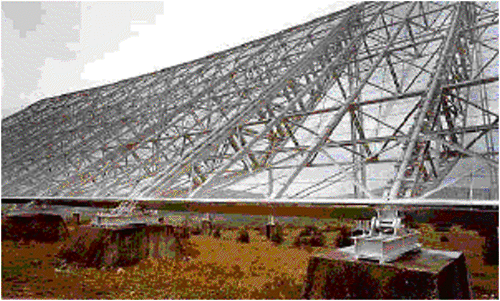|
European Incoherent Scatter Scientific Association UK Connections |
||||||
|
The EISCAT (European Incoherent Scatter) Scientific Association is an international research organisation operating three incoherent scatter radar systems (the UHF, VHF and ESR radars), an Ionospheric Heating facility and a Dynasonde in Northern Scandinavia. EISCAT studies the interaction between the Sun and the Earth, as revealed by disturbances in the magnetosphere and ionosphere. The great flexibility of the incoherent scatter technique allows a wide variety of experimental modes to be used, optimised for different altitude regions of the ionosphere from the D-region to the topside. Because of this, the EISCAT radars make important contributions to a diverse range of studies from interplanetary scintillation measurements in the solar wind to coupling between the ionosphere and middle atmosphere. The radars run both Common mode experiments, with generally available data, and Special Programmes, in which the data are reserved for the proposing experimenters. EISCAT also makes a large number of observations in support of satellite missions, including Cluster, POLAR, FAST and GEOTAIL. The RAL EISCAT Group supports the work of scientists in those UK research groups using EISCAT data as part of their scientific programme, by providing a computing service, database, analysis programs, data handling software and assistance with the development and implementation of radar experiments. SOURCE: UK EISCAT Support Group |
||||||
|
..
powerful advocate of EISCAT, Welsh political activist. by Henry Rishbeth With the sudden death of Phil Williams in June, the community lost a vigorous and charismatic figure who contributed much to solar–terrestrial physics and radio astronomy over a span of 40 years. He was born at Tredegar in the South Wales mining valleys, attended school at Bargoed, and throughout his life he was conscious of his Welsh heritage. He started his scientific career with a first at Cambridge and went on to postgraduate research at the Mullard Radio Astronomy Observatory at Lord's Bridge, Cambridge, receiving in 1964 his PhD for a thesis entitled “A study of radio sources at 38 Mc/s”. As a Fellow of Clare College and University Demonstrator in Physics, Phil stayed on a short time at Cambridge until 1967, when he joined the ionospheric group of Prof. Beynon at University College at Aberystwyth (now University of Wales, Aberystwyth). Apart from a spell at Kiruna in 1980–82, as Associate Director of Science of the European Incoherent Scatter organization (EISCAT), he was based for the rest of his scientific career at Aberystwyth, where he was appointed Professor of Solar–Terrestrial Physics in 1991. He served on the Council of the RAS from 1994 to 1997. Phil's scientific career was bound up with ionospheric incoherent scatter radar. The technique, devised by Bowles and Gordon in the USA, had been demonstrated in Illinois in 1957 and brilliantly applied in the 60s at a few sites, notably Jicamarca (Peru), Arecibo (Puerto Rico), Millstone Hill (Massachusetts) and Saint-Santin/Nançay (France). It measures density, temperature and velocity of ions and electrons throughout the ionosphere, in contrast to conventional ionospheric sounders that only measure electron density up to the ionospheric F2 peak. In Britain a powerful incoherent scatter radar began operating in 1968 at the (then) Royal Radar Establishment, Malvern, and was developed into a multistatic system, using as receiving sites the radio telescopes at Chilbolton, Hants, and Jodrell Bank “Mark III”. Phil's contribution was to move part of a large antenna, previously used at Lord's Bridge for the Cambridge 3C radio-source survey, and install it on a site near Aberystwyth. It completed the “MISCAT” system which, despite its relatively low power, was in 1972 the first incoherent scatter radar to measure three-dimensional drift velocities in the ionosphere. The EISCAT project was mooted in 1969, with sites north of the Arctic Circle at Tromsø, Kiruna and Sodankylä. After years of planning, construction went ahead in 1976 and operation began in 1981. Phil was a leading member of a band of British scientists who successfully made the case for joining EISCAT. In those days, the UK solar–terrestrial physics community comprised several groups of modest size, each with their specialist interests: the magnetosphere, aurora, airglow and its use for measuring ionospheric winds, radiowave absorption, beacon satellites, coherent radar, pulsations, computational modelling etc. With missionary zeal, Phil visited the various groups to bang the EISCAT drum, discuss how they might use EISCAT, and instruct them in the difficult topics of radar programming and data analysis. He had a particular flair for running training courses. All these activities helped the UK community to launch its highly successful EISCAT research programme that continues to this day. During his secondment to EISCAT, Phil's experiments had tested the new system with a thoroughness that resolved many a problem, real or potential. This technical familiarity with EISCAT served him well in his own subsequent research, which embraced all the major layers of the ionosphere. In the 90s Phil played a major role in using EISCAT in quite a different way: studying the solar wind by analysing the scintillations it causes in signals from distant quasi-stellar radio sources. This technique has the operational advantage of using the EISCAT system only for receiving, and is thus independent of limitations on the usage of the transmitters. It has added greatly to knowledge of the solar wind. He was also a leading protagonist of the EISCAT Svalbard Radar, which was commissioned in 1996. Phil's involvement in politics was a big part of his life. As a leading member of Plaid Cymru, of which he was Vice-President for several years, he stood six times for the Westminster Parliament and twice for the European Parliament, being finally rewarded in 1999 by election to a seat in the Welsh Assembly. In recent years his political activities had taken precedence over his science, and it was tragic that he was struck down with a heart attack just as his beloved science was once again taking priority. Phil is greatly missed. He knew how to enjoy life. He had many interests, to all of which he applied his infectious enthusiasm and energy. Our sympathy goes out to Ann, his wife of more than 40 years, and his son and daughter. Henry Rishbeth SOURCE: Blackwell Publishing |
||||||
| Royal Radar Establishment, Malvern,
Wales
The Royal Radar Establishment, or RRE, was a renaming of the Radar Research Establishment, which was formed in 1953 from the merger of the Telecommunications Research Establishment (TRE) and the Radar Research and Development Establishment (RRDE). The RRE was based in Malvern, Worcestershire, England, where both TRE and RRDE had been based, though at different sites. The RRE's major specialisations were research, development and production in the areas of radar, electronics, and computer hardware and software. Initially the establishment was under the control of the Ministry of Supply, and in 1959 control passed to the Ministry of Aviation. When the Ministry of Aviation was abolished in 1967 responsibility was passed to the Ministry of Technology, then in 1970 to the Ministry of Aviation Supply, and finally in 1971 to the Ministry of Defence. In 1976 the RRE merged with the Signals Research and Development Establishment to form the Royal Signals and Radar Establishment, which became part of the Defence Research Agency (DRA) in 1991. The DRA split on 2 June 2001 into two parts, a government body called DSTL (Defence Science and Technology Laboratory) and a company destined for privatisation, which became QinetiQ. DSTL (Defence Science and Technology Laboratory) 52°6'0"N, 2°18'57.6"W |
||||||
Related Links:
|
||||||
|
Rutherford Appleton Laboratory (RAL) +51° 34' 24.00", -1° 18' 53.00" ..
Rutherford Appleton Laboratory (RAL)
RAL hosts two of the UK's major scientific facilities: ISIS, is the brightest spallationneutron source in the world which uses neutron scattering to study the structure and behaviour of materials. ISIS provides research capabilities for around 1600 scientists from a range of disciplines, and has been operating since 1985. ISIS evolved from the original Nimrod proton synchrotron, whose location is currently used for the synchrotron which generates the neutrons and muons used to study materials in ISIS. The Central Laser Facility provides access to large scale laser systems for researchers from the United Kingdom and other EU countries. The facility operates high power glass and Ti:Sapphire laser installations and a number of smaller scale, tuneable lasers (including the Vulcan and Astra lasers). A vigorous development programme ensures that facilities maintain their international competitiveness. A third major facility is sited next to RAL and mostly owned by the STFC, sharing campus infrastructure: The Harwell Science and Innovation Campus was controversially chosen over the Daresbury Science and Innovation Campus as the site for the synchrotron light source Diamond, which officially opened in January 2007. RAL also hosts several minor facilities, including:
SOURCE: Wikipedia Rutherford Appleton Laboratory
..
|
||||||
|
PROUST Radar Saint-Santin/Nançay, France 44° 38' 58.37"N, 2° 11' 36.98"E ..
Abstract:
The PROUST radar is an atmospheric
sounder devoted to the study of clear air turbulence in the stratosphere
and troposphere, the mechanisms of turbulent exchanges between the troposphere
and stratosphere and disseminating the resulting pollutants. Two major
facts appear in the analysis of observations made over several years. (1)
the average coefficient of vertical turbulent diffusion is very low in
the stratosphere, it takes several years to eliminate down products injected
into this region (volcanic dust, exhaust from aircraft on trans-polar routes).
(2) the tropopause (interface between the troposphere and the stratosphere)
is often the site of intense turbulence that stirs the air masses from
these two regions and gives rise to a stable mixed layer which accumulates
products pollution, among other products by air transportation. The potential
impact of this layer on the radiative balance of the earth and its climate
change has so far never been evaluated. -
Google Translation
Le radar PROUST - Saint-Santin/Nançay (France) - [French] Papers:
|
||||||
|
Le
radar PROUST - Saint-Santin/Nançay (France)
..
Résumé: Le radar PROUST est un sondeur atmosphérique dévolu à l'étude de la turbulence en air clair dans la stratosphère et la troposphère, des mécanismes d'échanges turbulents entre la troposphère et la stratosphère et de la diffusion des polluants qui en résulte. Deux faits majeurs apparaissent à l’analyse des observations réalisées sur plusieurs années. (1) le coefficient moyen de diffusion turbulente verticale est très faible dans la stratosphère, il faut plusieurs années pour éliminer vers le bas les produits injectés dans cette région (poussières volcaniques, gaz d’échappement des avions effectuant des liaisons trans-polaires). (2) la tropopause (interface entre la troposphère et la stratosphère) est souvent le siège d’une intense turbulence qui brasse les masses d’air provenant de ces deux régions et donne naissance à une couche de mélange stable où s’accumule des produits de pollution, produits entre autres par le transport aérien. L’éventuel impact de cette couche sur le bilan radiatif de la terre et son évolution climatique n’a jusqu’à présent jamais été évalué. http://pagesperso-orange.fr/avionsetclimat/radar-proust/ Translation from Google Translate Saint-Santin/Nançay, France ..
Abstract: The PROUST radar is an atmospheric sounder devoted to the study of clear air turbulence in the stratosphere and troposphere, the mechanisms of turbulent exchanges between the troposphere and stratosphere and disseminating the resulting pollutants. Two major facts appear in the analysis of observations made over several years. (1) the average coefficient of vertical turbulent diffusion is very low in the stratosphere, it takes several years to eliminate down products injected into this region (volcanic dust, exhaust from aircraft on trans-polar routes). (2) the tropopause (interface between the troposphere and the stratosphere) is often the site of intense turbulence that stirs the air masses from these two regions and gives rise to a stable mixed layer which accumulates products pollution, among other products by air transportation. The potential impact of this layer on the radiative balance of the earth and its climate change has so far never been evaluated. What is an atmospheric sounder A radar is an atmospheric sounder ST (stratosphere-troposphere as ST) whose main targets are made by raindrops and turbulent vortices. What is a target? Your car is an example of a target to the radar beam used by the policeman who controls your speed. As for the turbulent vortex, they are familiar to you: remember the dead leaves swirling in the autumn at the corner of a wall: they visualize the presence of a vortex. Replace your car with a drop of water or a small tub and the cars on the Place de la Concorde by all the drops of water or turbulent vortices present at a given time in the radar beam pointing, for example , vertical. You'll have a pretty clear vision of the ST observed by radar from the moment where you specify that it is able to distribute the targets according to their distance in the "doors" thick contiguous dz, for a time interval dt. Dz dt and the parameters are referred to as vertical resolution and temporal resolution of the radar.
For altitudes below 15 km, the beam of the radar antenna (see figure) is (in first approximation) a rectangular parallelepiped of 15 km in height, whose base is the projection on the ground of the antenna. This cuboid is cut by the radar system in installments of thickness dz = 30m. PROUST ST radar is the only giving, without approximations, a vertical resolution of 30m. For such a resolution, a very high frequency (Ultra High Frequency) is used. This radar is capable of detecting atmospheric turbulence to an altitude of about 15 km. In the troposphere (from ground level to 6 to 8 km altitude) radar also detects the presence of clouds. In the stratosphere (above 9 km altitude), the activity of the turbulent atmosphere is the only target observed by radar. In summary, the characteristic of PROUST radar and nature of the observed targets allows one hand, the study of clouds (dynamic, population, water content, convective penetration into the stratosphere,...) and the other study of clear air turbulence (characteristics of atmospheric turbulence, wave-turbulence interactions, turbulent exchanges between the stratosphere and troposphere, etc. ...) Attachments:
|
||||||
| FAIR USE NOTICE: This page contains copyrighted material the use of which has not been specifically authorized by the copyright owner. Pegasus Research Consortium distributes this material without profit to those who have expressed a prior interest in receiving the included information for research and educational purposes. We believe this constitutes a fair use of any such copyrighted material as provided for in 17 U.S.C § 107. If you wish to use copyrighted material from this site for purposes of your own that go beyond fair use, you must obtain permission from the copyright owner. | ||||||
|
|
